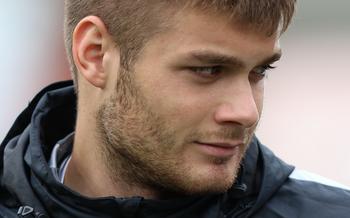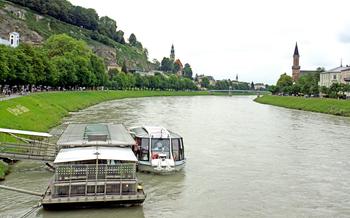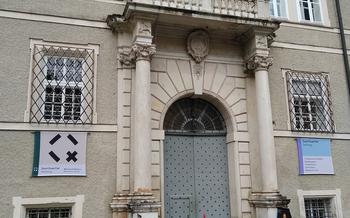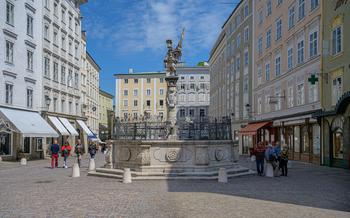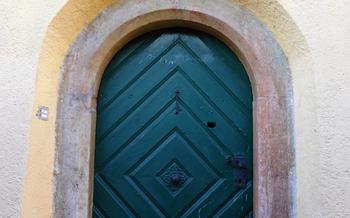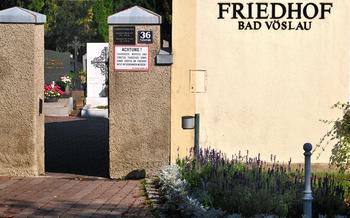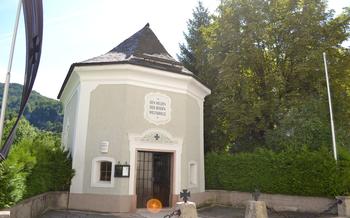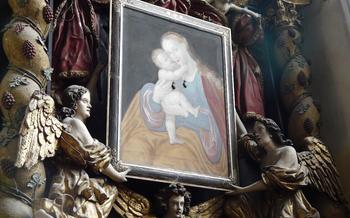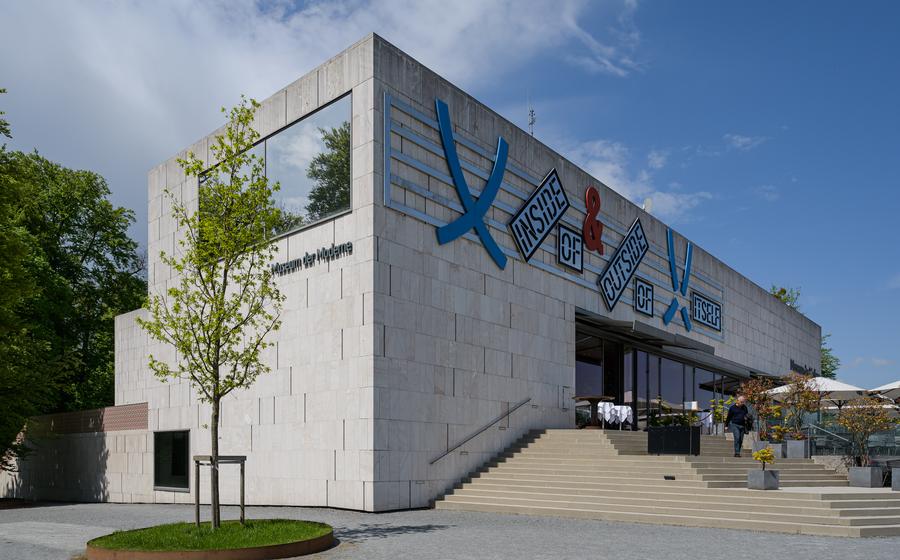
Museum der Moderne Rupertinum
- History of the Museum der Moderne Rupertinum
- Location and Accessibility
- Exhibitions and Collections
- Educational Programs and Workshops
- Architecture and Design
- Special Events and Activities
- Visitor Amenities and Services
- Hours of Operation
- Nearby Attractions
- Local Cuisine and Dining Options
- Accommodation and Hotels
- Transportation and Getting Around
- Practical Tips and Advice
History of the Museum der Moderne Rupertinum
The Museum der Moderne Rupertinum, a contemporary art museum located in the heart of Salzburg, Austria, has a rich history dating back to the 16th century. Initially constructed as a Benedictine monastery and later transformed into a university building, the edifice underwent several architectural changes before becoming a dedicated art space in the 20th century.
The museum's transformation began in 1983 when the Salzburg state government acquired the building with the intention of creating a modern art museum. The renowned Austrian architect, Hans Hollein, was entrusted with the task of designing the new museum. Hollein's design seamlessly integrated the historical structure with contemporary elements, preserving the building's historical essence while adding a modern touch.
The Museum der Moderne Rupertinum opened its doors in 1988, presenting a diverse collection of modern and contemporary art. Over the years, the museum has hosted numerous temporary exhibitions, showcasing the works of renowned artists such as Andy Warhol, Roy Lichtenstein, and Yves Tanguy.
One notable controversy surrounding the museum's establishment was the decision to convert a historical building into a modern art space. Some critics argued that the museum's contemporary focus clashed with the building's historical significance. However, the museum's supporters maintained that the juxtaposition of old and new created a unique and dynamic space for showcasing modern art.
Despite the initial controversy, the Museum der Moderne Rupertinum has become a beloved institution in Salzburg, attracting visitors from around the world. The museum's commitment to showcasing cutting-edge contemporary art while preserving its historical heritage has made it a must-visit destination for art enthusiasts and tourists alike.
Location and Accessibility
Located at the heart of Salzburg's historic district, the Museum der Moderne Rupertinum is a cultural landmark just steps away from other renowned attractions. Situated on the banks of the Salzach River, visitors can stroll along the picturesque waterfront, admiring the city's stunning architecture, before immersing themselves in the world of modern and contemporary art.
The museum is conveniently accessible via public transportation, with bus stops and tram lines within easy walking distance. For those arriving by car, limited parking is available nearby, but it's advisable to plan for alternative parking options due to the area's popularity. The museum is fully accessible to visitors with disabilities, offering ramps, elevators, and accessible restrooms throughout the premises.
After your visit, consider indulging in a delightful culinary experience at one of the charming cafes or restaurants in the area. Just a short walk from the museum, you'll find a variety of cuisines to suit every taste, from traditional Austrian dishes to international flavors.
Exhibitions and Collections
The Museum der Moderne Rupertinum houses a diverse collection of modern and contemporary art, showcasing works from the 20th and 21st centuries. The museum's permanent exhibition, titled "Panorama: Contemporary Art from Austria," features a comprehensive overview of Austrian art from the 1960s to the present day. Visitors can explore the evolution of artistic styles and movements, from abstract expressionism and pop art to conceptual and installation art.
Among the highlights of the collection are works by renowned Austrian artists such as Arnulf Rainer, Hermann Nitsch, and Franz West. Rainer's expressive paintings, characterized by their bold brushstrokes and gestural marks, offer a glimpse into the artist's inner psyche. Nitsch's provocative performances and ritualistic actions challenge traditional notions of art and explore themes of mortality and transcendence. West's playful and interactive sculptures invite viewers to engage with the artwork and question the boundaries between art and everyday objects.
Temporary exhibitions at the Museum der Moderne Rupertinum showcase the works of established and emerging international artists, often exploring specific themes or artistic movements. Past exhibitions have featured artists such as Andy Warhol, Roy Lichtenstein, and Ai Weiwei, presenting a diverse range of artistic perspectives and challenging conventional notions of art.
The museum's exhibitions are organized chronologically and thematically, allowing visitors to trace the development of modern and contemporary art and understand the historical and cultural contexts that shaped the works. Whether you're an art enthusiast or simply curious about the latest trends in contemporary art, the Museum der Moderne Rupertinum offers a rich and rewarding experience for all visitors.
Anecdote: During my visit to the museum, I was particularly struck by a large-scale installation by the artist Erwin Wurm. The work, titled "One Minute Sculptures," consisted of a series of everyday objects arranged in seemingly absurd and comical ways. Visitors were invited to participate in the artwork by posing in front of the objects and creating their own temporary sculptures. It was a playful and interactive experience that challenged my perceptions of what constitutes art and encouraged me to think outside the box.
Educational Programs and Workshops
The Museum der Moderne Rupertinum offers a range of educational programs and workshops designed to engage visitors of all ages with its collection and exhibitions. Guided tours, led by knowledgeable docents, provide insightful commentary and historical context, bringing the artworks to life. The museum also hosts lectures, talks, and symposia featuring renowned art historians, curators, and artists, offering visitors the opportunity to delve deeper into the world of modern art.
Families and school groups are welcome at the museum, with dedicated programs and workshops tailored to their needs. These programs encourage interactive learning and hands-on experiences, fostering creativity and critical thinking skills. Children can participate in art-making workshops, guided tours designed specifically for their age group, and scavenger hunts that transform the museum into a playful learning environment.
Booking or registering for educational programs and workshops is recommended to secure a spot. Visitors can find more information and book online through the museum's website or by contacting the museum's education department.
Insider tip: Don't miss the museum's popular "Art After Hours" workshop, where visitors can enjoy a creative evening of art-making, guided by experienced instructors, while sipping on a glass of wine.
Architecture and Design
The Museum der Moderne Rupertinum stands as a captivating interplay of historical and contemporary architectural elements. Originally built in the 17th century as a monastery, the building underwent a meticulous transformation in the 1980s to adapt to its new role as a modern art museum. Architect Hans Hollein masterfully fused the old and the new, preserving the monastery's Baroque facade while introducing striking modern interventions.
The museum's exterior captivates with its harmonious blend of old and new. The Baroque facade, adorned with elaborate stucco work and statues, exudes an aura of historical elegance. In contrast, the modern additions, characterized by clean lines and geometric forms, create a striking juxtaposition that reflects the museum's dedication to showcasing both traditional and contemporary art.
Inside, the museum's interior spaces are no less impressive. The original monastery's vaulted ceilings and frescoed walls have been carefully restored, serving as a backdrop for the museum's contemporary art collection. Natural light floods in through expansive windows, illuminating the artworks and creating a vibrant atmosphere. The interplay of light and shadow further enhances the visitor's experience, adding depth and dimension to the exhibited pieces.
One of the most striking features of the museum's interior is the grand staircase, a masterpiece of modern architecture. Designed by Hans Hollein, the staircase spirals upwards, connecting the museum's different levels with a sculptural grace. Its sleek metal structure contrasts beautifully with the surrounding historical elements, creating a visually arresting centerpiece.
The Museum der Moderne Rupertinum is not just a repository of art; it is itself a work of art, embodying the harmonious fusion of past and present. Its unique architectural features make it a must-visit destination for anyone interested in art, history, or architecture.
Special Events and Activities
The Museum der Moderne Rupertinum regularly hosts a variety of temporary exhibitions, performances, and events that complement its permanent collection and offer visitors a diverse range of experiences. These events often delve into specific themes, showcase the work of emerging or established artists, or explore contemporary trends in modern and contemporary art.
The museum's calendar features a mix of exhibitions that range from solo shows to group exhibitions, as well as thematic presentations that examine specific artistic movements or periods. Past exhibitions have covered topics such as abstract expressionism, conceptual art, and the influence of photography on modern art. The museum also hosts regular performances, lectures, and workshops that provide visitors with opportunities to engage with the artwork and delve deeper into the creative process.
One of the highlights of the museum's events program is the annual "Art Night," which takes place on a summer evening and transforms the museum into a vibrant hub of activity. Visitors can enjoy live music, performances, and installations, as well as food trucks and a lively atmosphere. The museum also hosts regular film screenings, artist talks, and workshops for children and families, making it a welcoming space for visitors of all ages to explore and learn about modern and contemporary art.
Insider Tip: Check the museum's website or social media channels for upcoming events and special exhibitions. Plan your visit to coincide with a particular event or exhibition to enhance your experience and gain a deeper understanding of the museum's diverse offerings.
Visitor Amenities and Services
The Museum der Moderne Rupertinum offers a range of amenities and services to enhance the visitor experience. For those looking to delve deeper into the artwork, audio guides are available for rent, providing insightful commentary and explanations. Wi-Fi access is also provided throughout the museum, allowing visitors to stay connected and access additional information about the exhibitions.
For a break from exploring the galleries, the museum houses a charming cafe that serves a selection of light refreshments, including pastries, sandwiches, and beverages. Visitors can relax and savor their snacks while enjoying views of the surrounding gardens. A museum shop is also located on-site, offering a variety of art-related souvenirs, books, and merchandise. From postcards and prints to unique handcrafted items, there's something for every taste and budget.
The museum's facilities include well-maintained restrooms for visitor convenience. Additionally, lockers are available for storing personal belongings, ensuring a hassle-free museum visit.
Insider Tip: Don't miss the museum shop's collection of limited-edition prints and posters featuring works from the museum's collection. These make for unique souvenirs or gifts for art enthusiasts.
Hours of Operation
The Museum der Moderne Rupertinum follows regular opening hours to accommodate visitors throughout the week. Generally, the museum is open from Tuesday to Sunday, with specific hours for each day. On weekdays, it welcomes visitors from 10:00 AM to 6:00 PM, allowing ample time to explore the exhibitions during the day. On Saturdays, the museum extends its hours slightly, remaining open from 10:00 AM to 7:00 PM, providing more flexibility for weekend visits. Sundays offer a shorter window for exploration, as the museum is open from 11:00 AM to 5:00 PM.
It's essential to note that the museum observes seasonal variations in its opening hours. During the summer months, from April to October, the museum extends its hours on Thursdays, staying open until 8:00 PM. This extended evening access allows visitors to enjoy the museum's atmosphere and exhibitions in the cooler evening hours.
The museum remains closed on Mondays, providing a day for maintenance and preparation for the upcoming week. Additionally, the museum may close on certain holidays or during special events, so it's advisable to check the official website or contact the museum in advance to confirm the hours of operation on specific dates.
Insider Tip: To avoid crowds and enjoy a more intimate museum experience, consider visiting on a weekday morning or during the off-season (November to March). These periods often offer a quieter and more relaxed environment to appreciate the artwork.
Nearby Attractions
Located in the heart of Salzburg's historic district, the Museum der Moderne Rupertinum is surrounded by a wealth of cultural and historical attractions. Take advantage of your visit to explore the nearby sights, which are easily accessible on foot or by public transportation.
A short stroll from the museum, you'll find the iconic Salzburg Cathedral, a stunning example of Baroque architecture that dominates the city's skyline. Climb to the top of the cathedral's towers for breathtaking panoramic views of the city and the surrounding Alps.
Just opposite the cathedral, visit the Residenzgalerie, housed in the former prince-archbishop's palace. This museum showcases a remarkable collection of European paintings from the 16th to the 19th centuries, including works by Rubens, Van Dyck, and Rembrandt.
For a glimpse into Mozart's life and legacy, head to the Mozart Geburtshaus, the composer's birthplace. This museum offers a fascinating journey through Mozart's childhood home, showcasing his early musical instruments and personal belongings.
Art enthusiasts will appreciate the Museum of Modern Art Salzburg, located just a few steps from the Museum der Moderne Rupertinum. This museum features a diverse collection of 20th-century and contemporary art, including works by Andy Warhol, Roy Lichtenstein, and Friedensreich Hundertwasser.
Take a break from the museums and stroll through the Mirabell Gardens, a UNESCO World Heritage Site. These beautiful gardens, designed in the 17th century, offer a tranquil oasis with fountains, sculptures, and colorful flowerbeds.
For a unique perspective of Salzburg, take the Festungsbahn, a funicular railway that leads up to the Hohensalzburg Fortress. This 900-year-old fortress offers stunning views of the city and the surrounding countryside.
Insider tip: If you're short on time, consider purchasing the Salzburg Card, which offers free admission to many of the city's museums and attractions, including the Museum der Moderne Rupertinum.
Local Cuisine and Dining Options
A trip to Salzburg is incomplete without savoring the local culinary delights. After exploring the Museum der Moderne Rupertinum, indulge in a traditional Austrian meal at one of the nearby restaurants. Gasthaus Zwettler's, just a stone's throw from the museum, offers a cozy ambiance and a menu featuring classic dishes like Wiener Schnitzel and Tafelspitz. For a taste of regional specialties, try Die Weisse, renowned for its Salzburger Nockerl, a fluffy soufflé-like dessert.
Vegetarians and vegans will find plenty of options at Tian Bistro, which serves creative plant-based cuisine. For a quick and delicious snack, head to Bäckerei Konditorei Fürst, a local bakery known for its mouthwatering pastries and cakes. Don't miss the chance to try Mozartkugel, a delectable chocolate confection named after the city's famous composer.
Insider tip: For a truly memorable dining experience, book a table at Restaurant Ikarus, located on the 16th floor of the Hangar-7 building. This Michelin-starred restaurant offers stunning panoramic views of Salzburg while you savor innovative dishes inspired by the region's culinary traditions.
Accommodation and Hotels
When seeking a place to stay near the Museum der Moderne Rupertinum, you'll find a range of options to suit diverse preferences and budgets. For a luxurious and convenient experience, consider the five-star Hotel Sacher Salzburg, located just a short stroll from the museum. This iconic hotel offers elegant rooms, a renowned restaurant, and stunning views of the city.
If you prefer a more intimate setting, the boutique Hotel am Dom is a charming choice. Situated in the heart of Salzburg's Old Town, it provides easy access to the museum and other attractions.
For budget-conscious travelers, the Jugendherberge Salzburg provides a comfortable and affordable option. This modern hostel offers clean and cozy rooms, a communal kitchen, and a friendly atmosphere.
To immerse yourself in Salzburg's history, consider staying at the Hotel Goldener Hirsch, a traditional Austrian inn dating back to the 15th century. Located just steps from the museum, it offers a unique blend of old-world charm and modern amenities.
No matter your choice of accommodation, remember to book in advance, especially during peak tourist seasons, to secure your preferred room and avoid disappointment.
Transportation and Getting Around
Getting to the Museum der Moderne Rupertinum is a breeze with Salzburg's efficient public transportation system. Hop on bus lines 2, 5, 6, 25, or 27, and alight at the "Mozartsteg" stop, just a short walk from the museum. Alternatively, tram lines 1 and 2 will take you to the "Rudolfskai" stop, which is also within easy walking distance.
For those who prefer a more leisurely approach, consider renting a bicycle from one of the many rental shops in the city. Salzburg is a bike-friendly city with designated bike lanes and routes, making it easy to explore the city on two wheels.
Taxis are readily available in Salzburg, and you can hail one on the street or book one in advance through a taxi app. If you're driving your own car, there are several parking garages and lots within a short distance of the museum.
Insider tip: To truly immerse yourself in the city's charm, take a scenic bus or tram ride along the Salzach River. The "Obus" line, in particular, offers stunning views of the river, the Old Town, and the surrounding mountains.
Practical Tips and Advice
Comfortable Attire: Opt for comfortable footwear, as you'll be doing a lot of walking. The museum's modern interior and minimalist aesthetic call for a smart casual dress code.
Photography Enthusiasts: Capture the essence of the museum's architecture and artwork through photography. Use natural light from the expansive windows to your advantage, and don't miss the unique perspectives offered by the building's various viewpoints.
Cloakrooms and Storage: Take advantage of the museum's cloakrooms to store bulky items or luggage. This will allow you to move freely through the galleries without any unnecessary burdens.
Insider Tip: Enhance your museum experience by visiting on a weekday to avoid crowds and fully immerse yourself in the tranquility of the exhibits.
